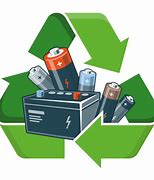 Everyone who works for a company needs to know how to work safely and without risks to health. The Health and Safety at Work Act 1974 requires you to provide whatever information, instruction, training and supervision as is necessary to ensure, so far as is reasonably practicable, the health and safety at work of your employees.
Everyone who works for a company needs to know how to work safely and without risks to health. The Health and Safety at Work Act 1974 requires you to provide whatever information, instruction, training and supervision as is necessary to ensure, so far as is reasonably practicable, the health and safety at work of your employees.
This is expanded by the Management of Health and Safety at Work Regulations 1999, which identify situations where health and safety training is particularly important, e.g. when people start work, on exposure to new or increased risks and where existing skills may have become rusty or need updating.
Training is essential to the achievements of a business. Perhaps its most positive benefit is better employees. A company develop the potential of an employee, and part of the way a company encourages improvement is through training. Often, good training is just as important as a good benefits package for an employee. Health and safety training is essential in order to stay compliant with current regulations. Training must be provided during working hours and not at the expense of your employees. Special arrangements need to be made for part timers or shift workers.
We can train your employees with mandatory health and safety training as well as additional training to suit your industry. We have teamed up with local companies who can provide in-house training and a company called iHasco who provide online training, they can assist you by providing a package to suit your employee needs and your pocket!
Online training offers clients the benefit of training without losing staff for hours at a time. The courses are easy to complete online and a certificate is downloaded for records. The benefit of this is that everyone can be taught without it interfering with the business.
IHASCO have a library of courses on offer including health and safety, HR Compliance, Management, Business Compliance and in various sectors. Click the link to their website. IHASCO.
To learn more about making your training simple, speak to Amiiee Park at iHasco and quote ‘WHSS’.
Email: amiiee.park@ihasco.co.uk
Telephone: 01344 947409 EXT. [538] W.
If you would like us to contact the company on your behalf or would like alternative training requirements, please let us know.
Join our blog page – Click here.
Contact us.
Every year since 2003, people celebrate National Positivity Day or Positive Thinking Day on September 13. It’s a day to ignore our fears and worries (even if it’s just for a day!) and focus solely on the good in our lives, spread happiness, and be kind to ourselves and others.
If it’s your first time learning about Positive Thinking Day or you need more ways to celebrate the annual tradition, I’ve got a few ideas that can boost your positivity.
And if you practice these ideas daily or as often as possible (instead of once a year), you’ll become a more optimistic, resilient, and happy person.
If you need advice or wish to talk, contact us! 
Contact us for further information.
EDIT
Our parachute jump is this week. We have raised 3/4 of our target. Thank you to those who have sponsored our event. To those who still wish to, they still have time.
Thank you.
Emma & Kerry
x
Emma &Kerry have been great friends for many years. They have taken on many challenges together.
This year they plan on doing a challenge to raise money for charity by doing something exciting. They have decided to do a parachute jump in Whitchurch on 24th August 2023. Now some people may think that they have lost their minds but they are both looking forward to supporting each other with this challenge.
They have decided to choose a charity each and split the money between the two charities.
Emma
Her chosen charity is the Cardiology Department at the Queen Elizabeth Hospital, Birmingham.
A cardiologist is a healthcare provider who can treat chest pain, high blood pressure and heart failure, as well as problems with heart valves, blood vessels and other heart and vascular issues. They can order tests like electrocardiograms, echocardiograms and CTs (computed tomography) to find out what’s wrong
Her reason for choosing this charity is because they help her husband Eric and others to gain some normality and independence in their day to day lives.
She ran a half marathon at Lake Vyrnwy to raise money for them in 2018!
To find out more about them, follow this link. https://www.nhs.uk/services/hospital/queen-elizabeth-hospital/RJ231/departments/SRV0014/cardiology/
Kerry
Her chosen charity is SYST Shropshire Youth Support Trust.
SYST is a registered charity that offers holistic and bespoke support to young people who are not in education, employment or training. So far the trust has supported nearly 2500 young people.
Her reason for choosing this charity is so the trust can assist many more young people to build their confidence by offering employment support, wellbeing support, or even helping them to set up their own business!
To find out more about them, follow this link. https://www.systbusiness.co.uk/
The money that is being raised will be collected by UK Skydiving Adventures, they will then issue payment to our chosen charities.
Emma and Kerry hope that you can offer sponsorship to help them to raise funds to support their chosen charity.
Thank you.
Emma Woodhouse is fundraising for UK Skydiving Adventures | Give as you Live Donate
 Health and safety on waste sites and when managing waste has never been so important. There are so many hidden dangers and hazards from, for example:
Health and safety on waste sites and when managing waste has never been so important. There are so many hidden dangers and hazards from, for example:
National Operational Guidance (NOG) that has been written for the UK Fire and Rescue Service (FRS) reports over 300 waste fires per year. And according to Material Focus batteries cause “three and half times more” fires in the waste stream than previously reported. They also shared that more than 700 fires in bin lorries and recycling centres were caused by batteries that had been dumped into general waste.
One of the biggest challenges when dealing with waste fire are deep seated fires which start at the centre of a rubbish pile (typically there are two types of waste fires, surface fires and deep-seated fires).
Don’t let waste build up. When dealing with waste on a waste site ensure that there is a process in place to separate, segregate and dispose of the waste. The risk of fire is greater when there is more waste for longer periods of time. The more waste there is the further a fire will spread and larger piles are more likely to self-combust if stored for longer periods of time. To reduce the risk, reduce the amount of waste being stored.
Segregation is important, ensure there are gaps, spaces between piles of waste, most guidance suggests having breaks of at least 6m.
Ensure the site is secure and has CCTV; arson can be a big problem on waste sites.
Ensure that the site has a strict no smoking policy.
The UK FRS NOG fires on waste sites guidance is a useful resource as is the Waste Industry Safety and Health Forum (WISH) document, Reducing fire risk at waste management sites.
Carry out a risk assessment that:
The BBC recently reported that single use vapes are sparking surges in fires at UK waste sites. They indicated that a whopping “1.3million disposable e-cigarettes discarded every week often end up in general waste and their broken batteries are highly flammable”. The document suggests that many waste sites are now using “artificial intelligence to detect vapes and their lithium-ion batteries, as well as installing thermal imaging cameras and automatic foam jets.”
Costs and impacts to the industry
Insurance companies are becoming nervous and many are refusing to insure waste sites, or are imposing huge annual premiums.
A study carried out in 2021 suggests that lithium-ion batteries are responsible for almost half of the UK’s waste fires with an estimated cost of around £158m to the UK economy.
When there are fires on waste sites, the environmental impact is significant which can result in fines being imposed by the Environment Agency (EA) or Health and Safety Executive (HSE).
Many consumers do not understand the problems or risks and even the hazards associated with batteries. Typically, they are not taken to local battery disposal bins (often provided at local supermarkets), and they are hidden in their usual household waste.
Scott Butler, Executive Director of Material Focus said: “People should never bin their electricals or their portable batteries. If they can, they should remove any hidden batteries from their electricals and recycle the batteries and electricals separately. If they can’t remove the batteries, they should recycle their electricals separately as always. Having listened to the numerous stories of flames engulfing waste and recycling trucks as they drive down residential streets, it’s important that we all take action now to keep our streets, householders, waste and local authority staff, and fire fighters safe. People can find their nearest recycling point for batteries and electricals by visiting our recycle your electricals website.”
Mark Andrews, National Fire Chief’s Council Waste fires lead said: ” We urge people to recycle electricals and batteries and not to dispose of them with general household waste. People are often surprised to hear that batteries can cause fires in both bin lorries and waste plants, but they do and as we use and dispose of more electronic devices these incidents are not rare. These fires can be challenging for fire services to deal with, have a significant impact on local communities and present a real risk to staff working on lorries and waste plants. Everyone can do their bit and prevent fires by ensuring they dispose of electrical items correctly.”
Lithium batteries are extremely challenging as damaged and defective batteries are significantly more dangerous as they can lead to thermal runaway. Therefore, it is important to raise awareness and improve the way that consumers dispose of these batteries. Many are calling for a change in legislation in fact The British Metal Recycling Association (BMRA) has called for new rules to prevent households throwing away unwanted electrical equipment.
Problems with lithium batteries include:
Warning signs that a lithium-ion battery or cell is likely to fail include:
Until the safe disposal of lithium batteries is more heavily regulated it is important to take care when dealing with waste lithium batteries. Always ensure that a risk assessment is carried out and that there are suitable and sufficient controls in place to minimise the consequences. If in doubt, seek advice from an expert.
Please contact us if you require further information.
 As of Monday 3rd July, Health and Safety Executive (HSE) inspectors have begun a targeted inspection initiative focusing on manufacturing businesses where materials that contain silica are used. This will include brick and tile manufacturers and foundries. Their Dust Kills campaign is well underway.
As of Monday 3rd July, Health and Safety Executive (HSE) inspectors have begun a targeted inspection initiative focusing on manufacturing businesses where materials that contain silica are used. This will include brick and tile manufacturers and foundries. Their Dust Kills campaign is well underway.
The inspections, which start Monday 3 July, are checking that employers and workers know the risks involved when dealing with respirable crystalline silica (RCS) and that businesses have control measures in place to protect workers’ respiratory health.
It is estimated that around 500 deaths occur every year in Great Britain as a result of workplace exposures to RCS.
ARE YOU AWARE OF THE RISKS ?
Inspectors are checking that employers and their workers know the risks and have control measures in place to prevent exposure to RCS which can cause irreversible lung disease if breathed in over time.
Employers should talk to their workers about the risks, and how to avoid them. Make sure they understand how a job should be done safely without creating risks to their health.
Silica is a natural substance found in most stones, rocks, sand, and clay. Silica particles are produced during many manufacturing tasks involving these materials. Over time, exposure to silica particles can harm a worker’s ability to breathe and cause irreversible, often fatal, lung diseases.
UNDERSTAND THE DANGERS!
Exposure can cause serious health problems and may lead to an early death. By breathing it in, your workers could develop the following lung diseases:
HSE’s head of manufacturing David Butter said: “It’s important that manufacturing businesses act now to ensure they comply with the law and protect their workers from serious lung diseases. Businesses should take note that good ventilation in the workplace and personal protective equipment are just some of the measures they need in place to protect the respiratory health of workers.”
Contact us for further information.
Guest post